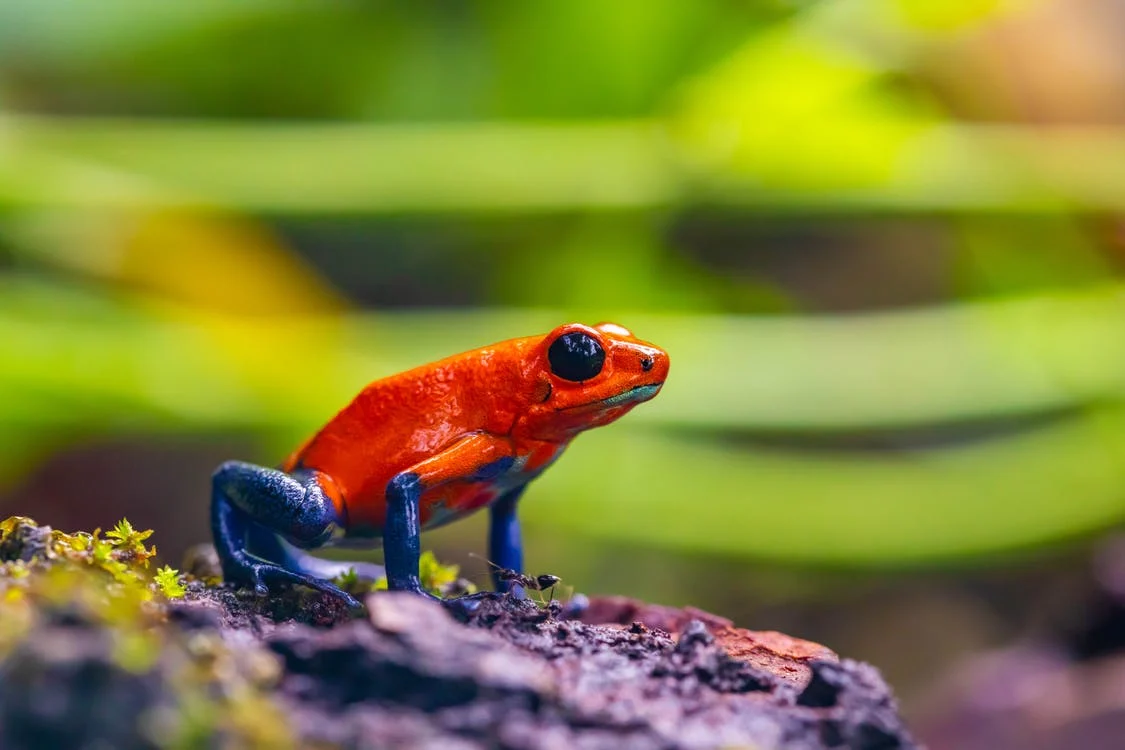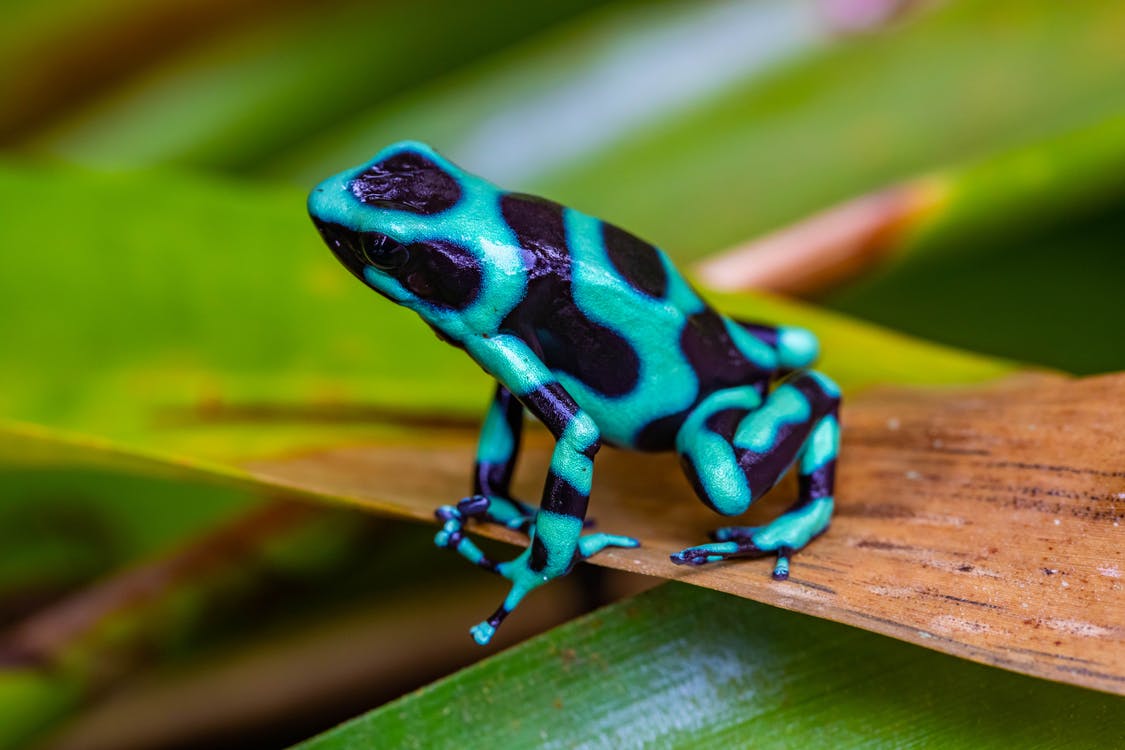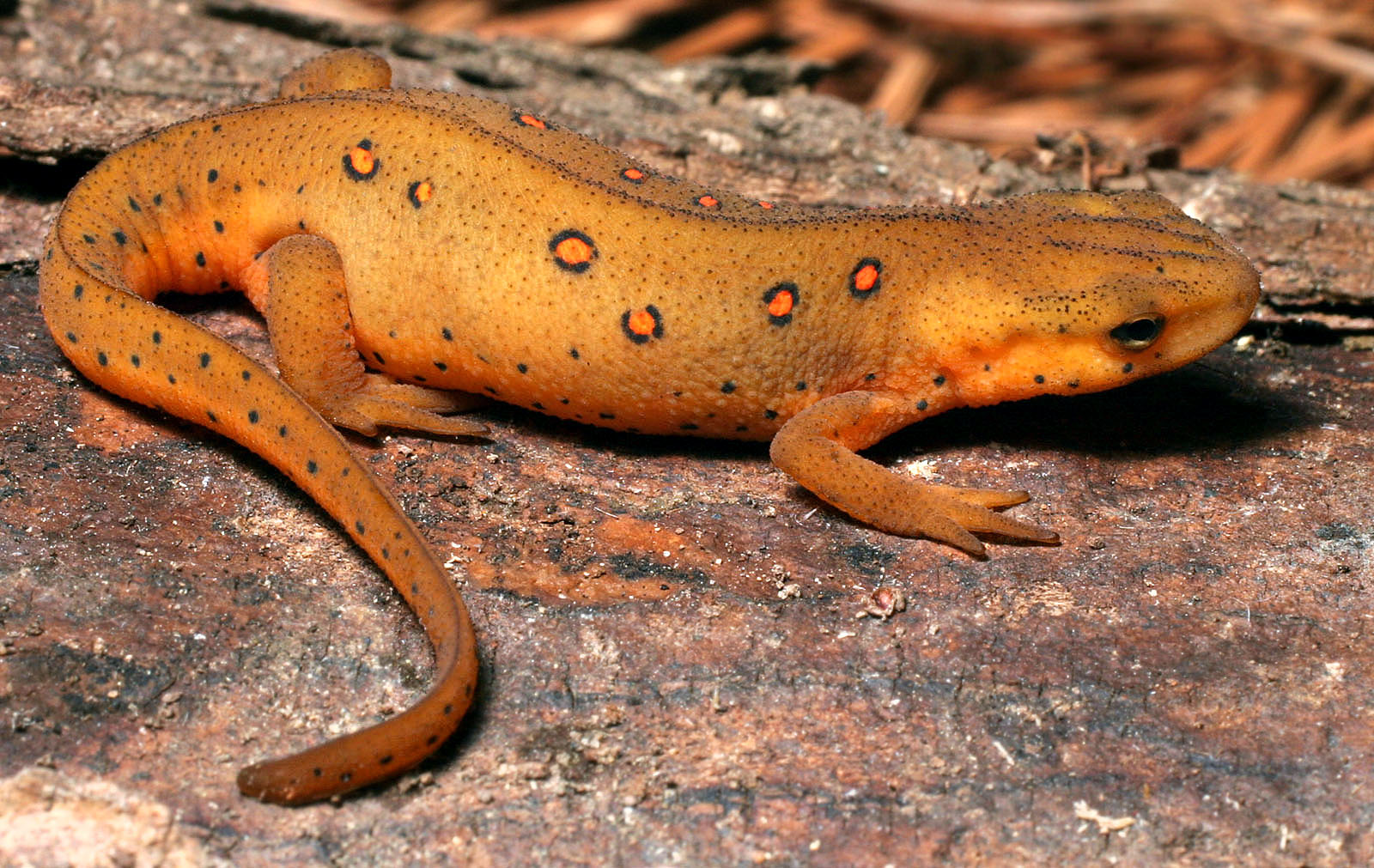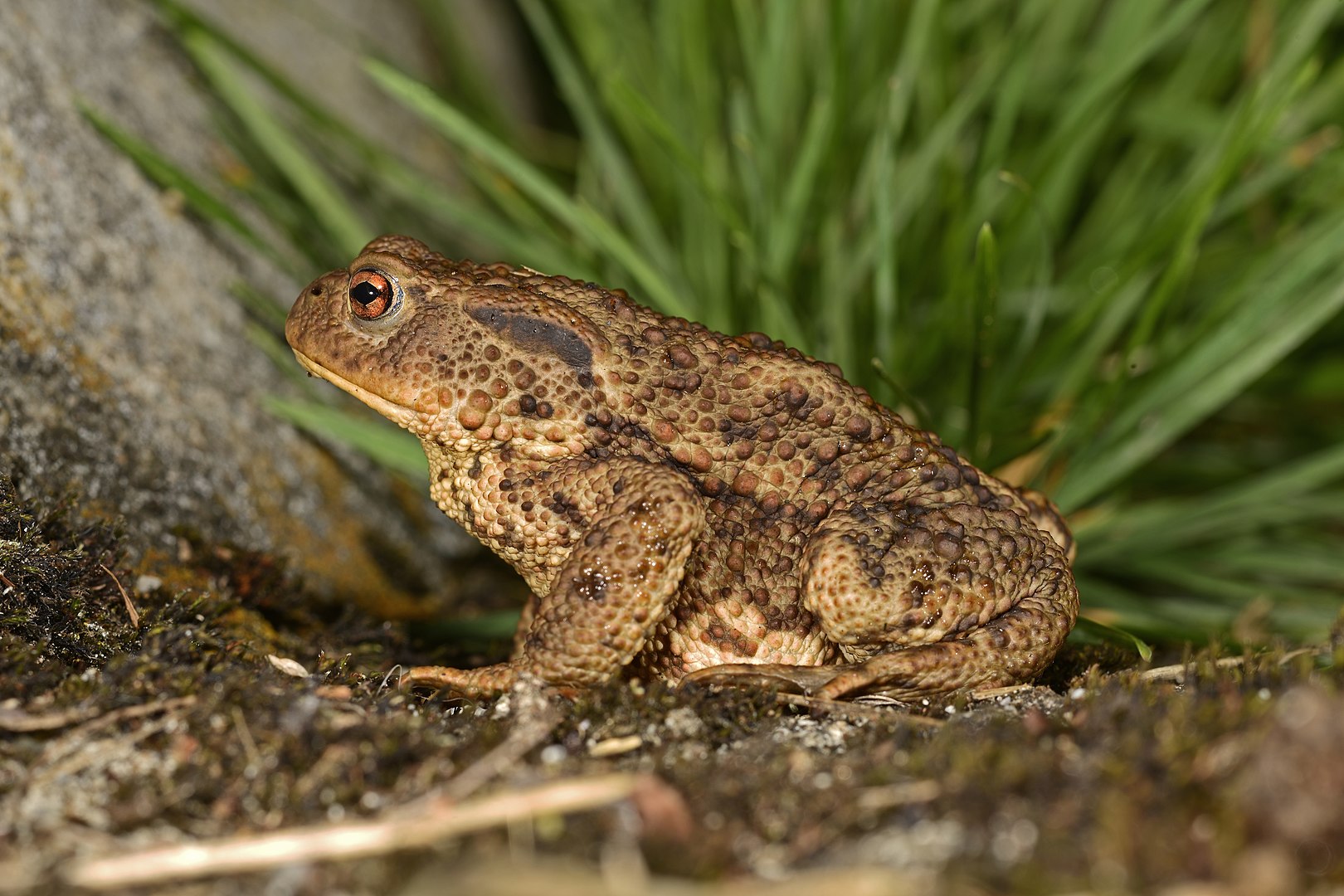Amphibians
Amphibians are small vertebrates that need water, or a moist environment, to survive. The species in this group include frogs, toads, salamanders, and newts. All can breathe and absorb water through their very thin skin. Amphibians also have special skin glands that produce useful proteins. Some transport water, oxygen, and carbon dioxide either into or out of the animal. Others fight bacteria or fungal infections. To warn potential predators, the most toxic amphibians are also the most brightly coloured.

Poison Dart Frogs
Common name: Poison dart frog, dart-poison frog, poison frog or poison arrow frog
Family: Dendrobatidae
Genus: The family Dendrobatidae currently contains 16 genera, with about 200 species. Click here to see more detailed taxonomy details.
Distribution: native to tropical Central and South America
Venomous or poisonous?: Poisonous
Interesting facts: The golden poison frog is the most poisonous animal on the planet; these frogs produce deadly alkaloid batrachotoxins in their skin glands as a defence against predators. To become poisoned a predator generally must attempt to consume the frog, although this species is so toxic that even touching an individual frog can be dangerous.

Poison Dart Frogs continued
Interesting facts ctd.:The frog is the main source of the poison in the darts used by the natives to hunt their food. The Emberá people carefully expose the frog to the heat of a fire, and the frog exudes small amounts of poisonous fluid. The tips of arrows and darts are soaked in the fluid, and remain deadly for two years or longer.
Captivity: Due to their small range in the wild, poaching for the pet trade formerly represented a serious threat to the survival of the species. Due to efforts of frog breeders like Tesoros de Colombia, captive bred frogs are now widely available for the pet trade. As these specimens are legal, non-toxic, healthier, and less expensive when compared to poached animals, the demand for illegally obtained wild caught specimens has decreased. Today, the IUCN estimates that the majority of golden poison frogs sold for the pet trade are legally produced from captive lines, and estimates the threat from collection for the pet trade to be small.

Salamanders
Common name: Rough-skinned Newt
Family: Salamandridae
Genus: Taricha (granulosa)
Distribution: Habitats of rough-skinned newts are found throughout the Pacific Northwest. Their range extends south to Santa Cruz, California, and north to Alaska
Venomous or poisonous?: Poisonous
Interesting facts: Some salamander toxins are particularly potent including the neurotoxin tetrodotoxin, the most toxic nonprotein substance known. It is the same toxin found in pufferfish and a number of other marine animals and has the effect of inducing paralysis and death by asphyxiation. Handling the newts does no harm, but ingestion of even a minute fragment of skin is deadly. In feeding trials, fish, frogs, reptiles, birds, and mammals were all found to be susceptible.

Toads
Common name: Common toad
Family: Bufonidae
Genus: Bufo
Distribution: most of Europe, in the western part of North Asia, and in a small portion of Northwest Africa
Venomous or poisonous?: Poisonous
Interesting facts: The main toxic substance found in the parotoid gland and skin of the common toad is called bufotoxin. Its physical effects resemble those of digitalis, which in small doses increases the strength with which the heart muscle contracts and which is used in the treatment of congestive heart failure. The skin of the cane toad contains enough toxin to cause serious symptoms or even death in animals, including humans. Clinical effects include severe irritation and pain to eyes, mouth, nose and throat, cardiovascular and respiratory symptoms, paralysis and seizures, increased salivation, vomiting, hyperkalemia, cyanosis and hallucinations. There is no known anti-venom.